Saffron, often referred to as “red gold,” is one of the world’s most prized and expensive spices. Derived from the dried stigmas of the Crocus sativus flower, saffron has a distinct floral aroma and earthy, slightly bitter flavor, which has made it a favored ingredient in cuisines around the globe. While saffron is mainly cultivated on a commercial scale, it is also possible for the home gardener to grow this precious spice.
In this article, we’ll delve into the general steps to grow kesar and the potential benefits of incorporating saffron into your diet. By the end of this guide, you’ll also have a comprehensive understanding of the benefits of saffron, as well as the knowledge and confidence to potentially start growing this golden culinary treasure in your backyard or small-scale operation.
Table of Contents
What Is Saffron Used For?
Saffron or kesar is a highly-prized spice derived from the Crocus sativus flower. In cooking, saffron is used to add a distinct, slightly sweet, and floral flavor and rich golden-yellow color to dishes like paella, biryani, and risotto. Apart from making dishes, saffron also has medicinal value in traditional Chinese medicine. It has potential benefits in improving mood, aiding digestion, and acting as an antioxidant. Besides, it can be used in skincare products for its brightening properties, in perfumes for its aromatic qualities, and historically as a natural dye for textiles. Furthermore, saffron holds cultural significance in various rituals and ceremonies.
Which Flower Does the Spice Saffron Come From?
Next, you may be curious about that saffron is obtained from which plant. In fact, the spice saffron is derived from the flower of the Crocus sativus, which is also known as the “saffron crocus” or “autumn crocus”. This small, purple-flowered plant is a perennial that blooms in the fall. Its delicate red stigmas - the female part of the flower are carefully hand-picked and dried to produce the valuable saffron spice. Saffron is one of the world’s most expensive spices due to the labor-intensive harvesting process, as it takes over 75,000 saffron crocus flowers to yield just one pound of the prized spice.

Crocus Sativus
Can We Grow Saffron at Home?
YES! We can grow saffron at home. It is legal to grow saffron in the US. You can either grow it in small garden spaces or containers. Here are some key points about growing saffron at home:
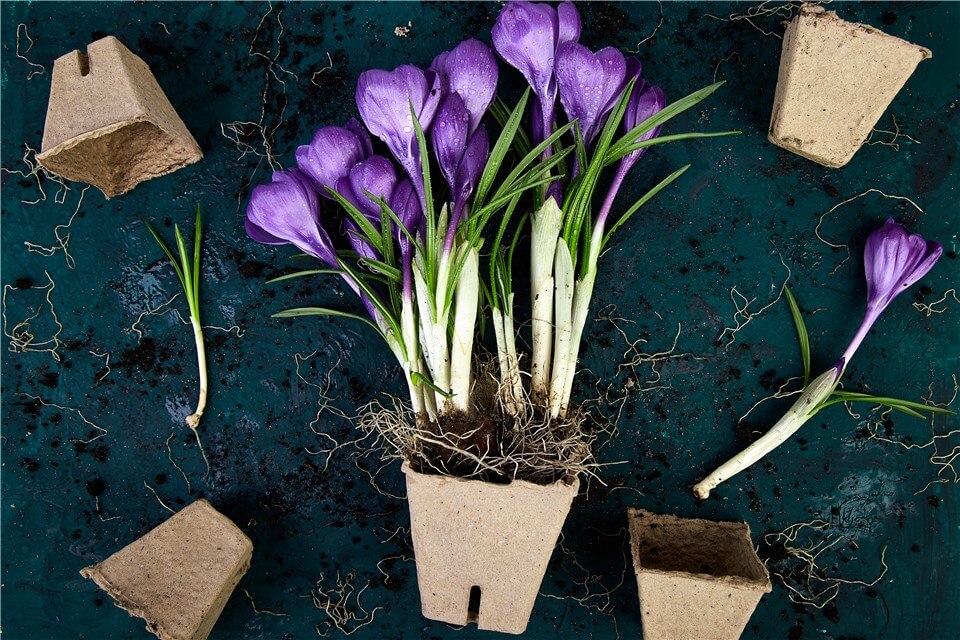
Can We Grow Saffron at Home?
- Saffron crocus is the plant that produces the prized saffron spice. This autumn-flowering bulb can be grown in USDA hardiness zones 6-9.
- Saffron grows best in well-draining, sandy or loamy soil in full sun. The corms should be planted 4-6 inches deep and 4-6 inches apart in the fall.
- Saffron requires a period of cold temperatures - at least 6-8 weeks below 50°F to trigger flower bud formation. This makes it suitable for growing in temperate climates.
- The purple flowers bloom in the fall and the red stigmas or threads must be hand-picked each morning as they emerge. This labor-intensive harvesting is what makes saffron so expensive.
With proper planting, care, and harvesting, a home saffron patch can yield 0.1-1 gram of dried saffron per square meter each year, which is enough for the home cook.
How to Grow Saffron at Home?
While saffron production is traditionally limited to certain regions with the ideal climate, advances in small-scale saffron cultivation have made it possible for home gardeners to grow this valuable spice, even in limited spaces. Growing your own saffron at home can be a rewarding and cost-effective endeavor, allowing you to harvest the world’s most expensive spice right from your garden or patio.
By following a few key steps, you can cultivate your own supply of saffron and enjoy the rich, floral aroma and vibrant color it imparts to dishes.
1. Purchase Crocus Corms
These hardy bulbs are available at garden centers and online retailers. You can often find various species with vibrant colors, such as purple, yellow, and white. When selecting corms, look for firm, plump ones, as they are more likely to thrive. Plant them in well-drained soil in a sunny or partially shaded location, ideally in groups to create a stunning visual impact when they bloom. With minimal care, crocus corms will reward you with cheerful flowers that emerge even before the last frost, signaling the arrival of spring.
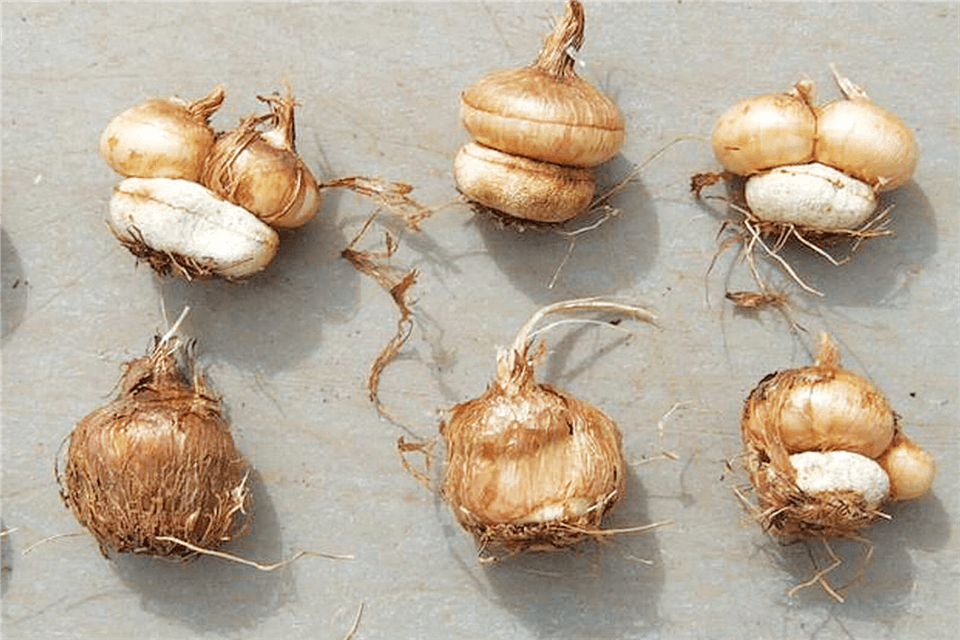
Purchase Crocus Corms
2. Choose the Right Location
Saffron crocus requires full sun exposure, at least 6 hours per day. If your plant fail to accept enough light at home in your region, you can use specially-designed LED grow light to meet your needs. Besides, you’re recommended to avoid heavy and clay-based soils, making sure the soil is well-draining, with a sandy or loamy texture.
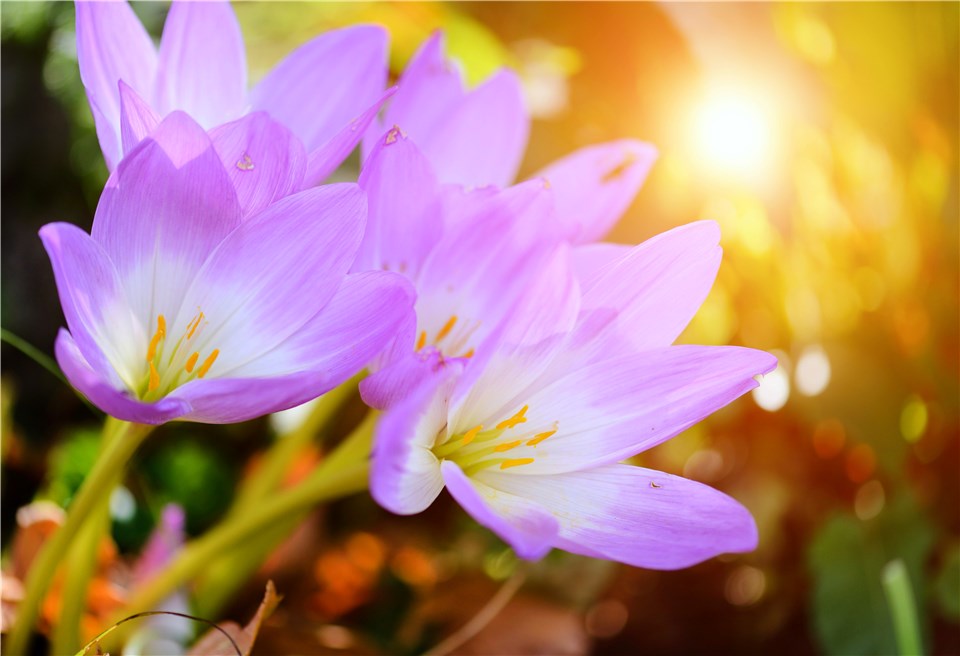
Full Sun Exposure
3. Prepare the Planting Bed
Loosen the soil to a depth of 8-10 inches and mix in compost or other organic matter to improve drainage. Create raised beds or mounds if your soil is heavy and test the soil pH and amend it to slightly alkaline, between 6.0-8.0.
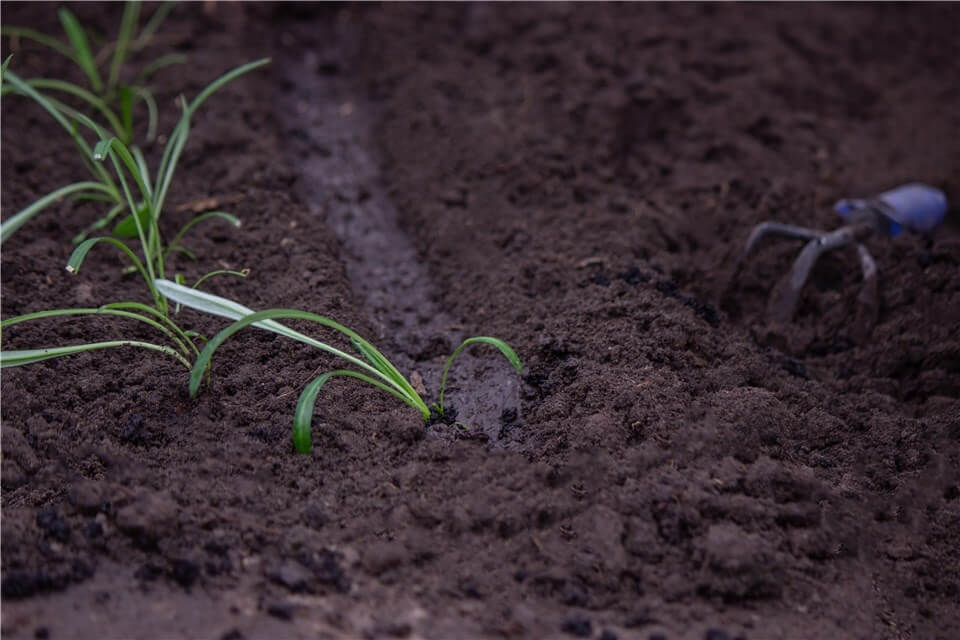
Prepare the Planting Bed
4. Plant the Saffron Corms
Purchase high-quality saffron corms from a reputable supplier. In the autumn, about 6-8 weeks before your first frost, plant the corms 4-6 inches deep and 4-6 inches and then cover the planted corms with 2-3 inches of soil.
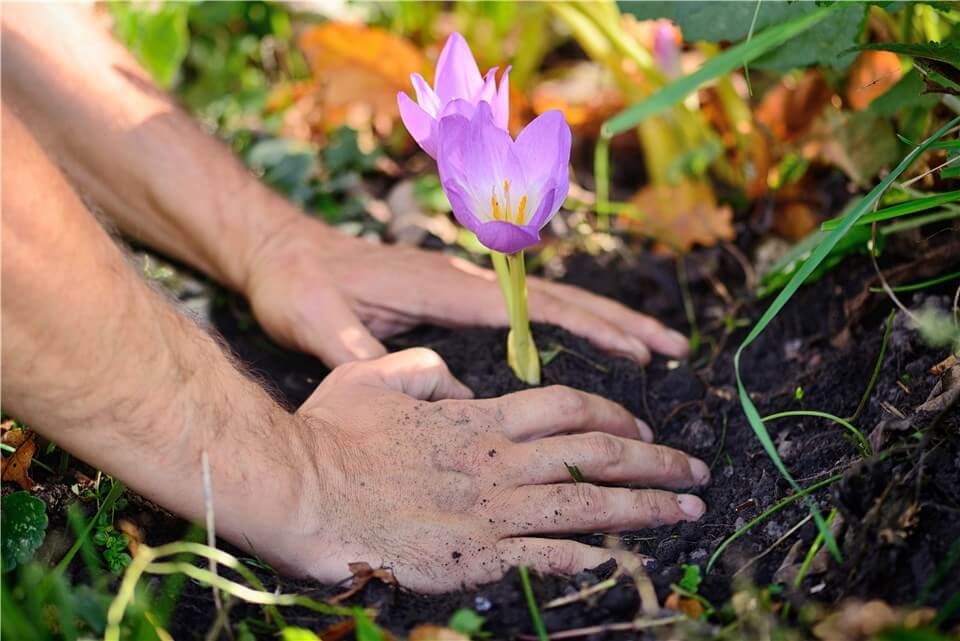
Plant the Saffron Corms
5. Trigger Flowering Stages
Saffron needs 6-8 weeks of cold (below 50°F) to trigger flowering; in warm conditions, you may need to pre-chill the corms in the refrigerator before planting.
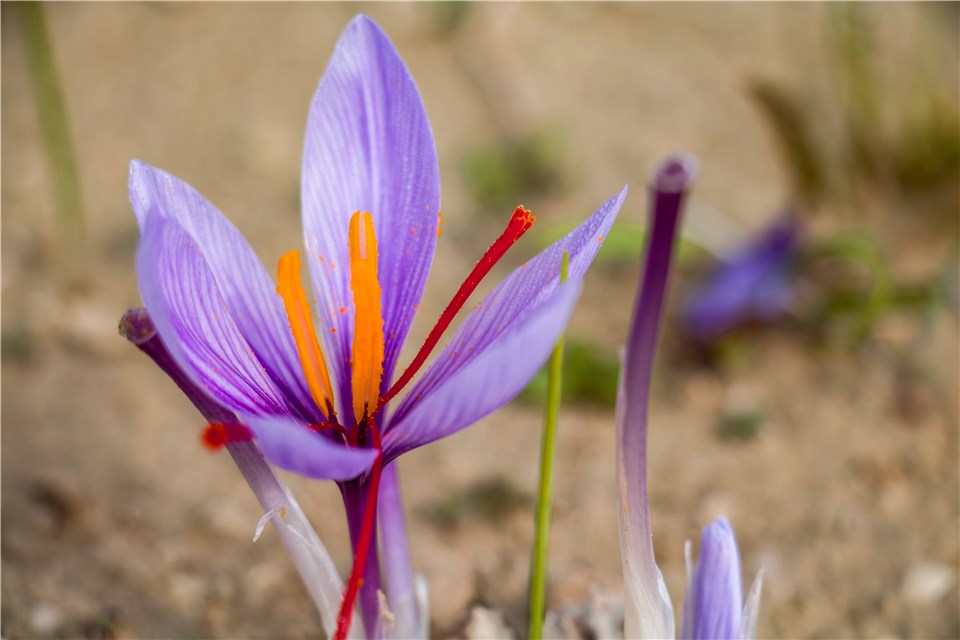
Trigger Flowering Stages
6. Care and Maintenance
Water the plants regularly, about 1 inch per week, keeping the soil moist but not waterlogged. In the early spring, you can also apply a balanced and slow-release fertilizer.
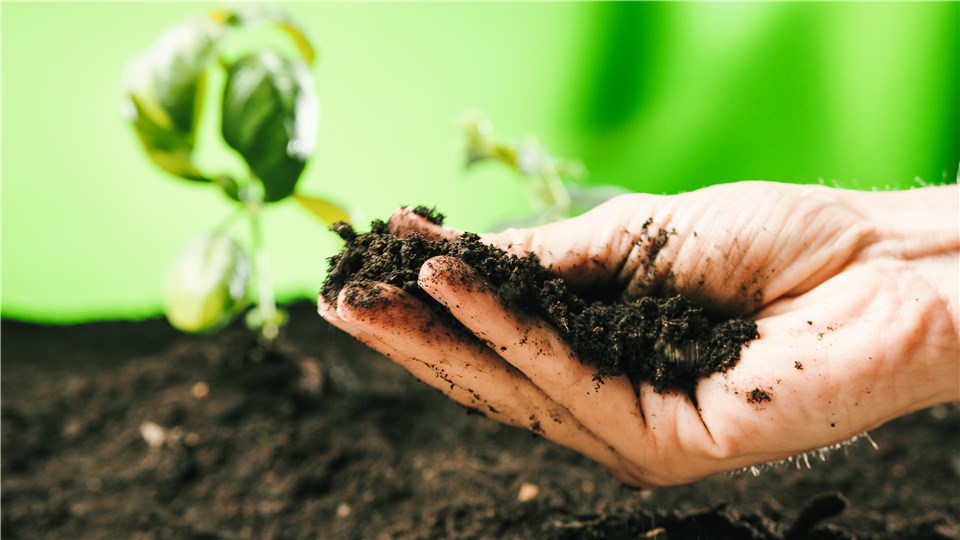
Keep the Soil Moist
7. Harvest Saffron
The purple flowers will bloom in the fall, usually between October and November. In these mornings, carefully hand-pick the bright red stigmas or threads from the flowers as they emerge. Afterwards, dry the harvested saffron threads in a warm, well-ventilated area.
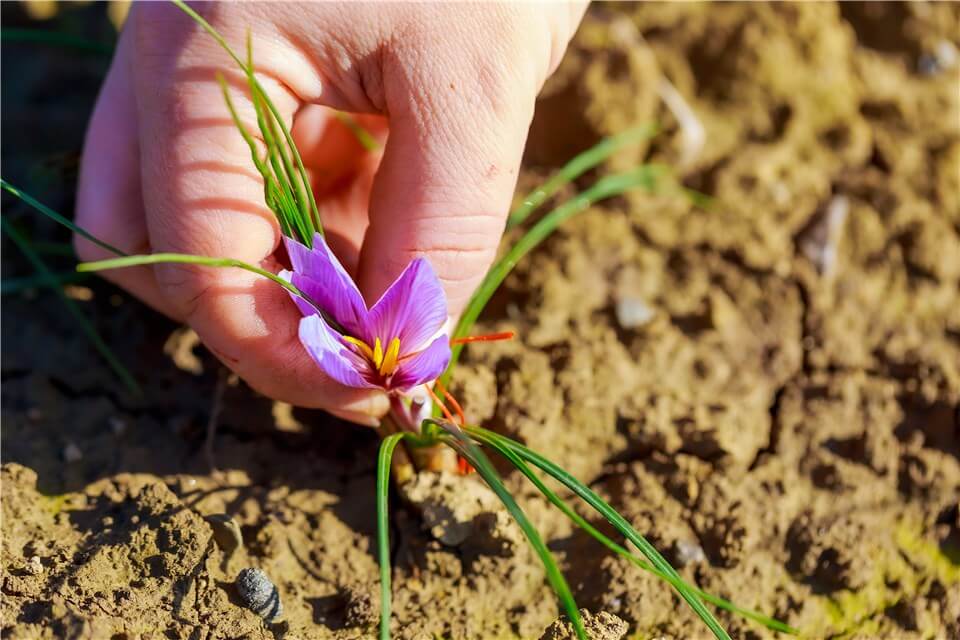
Harvest the Saffron
FAQs About Saffron Farming at Home
As you embark on your saffron growing journey, you may have some questions about farming at home. Here are some frequently-asked questions in this regard.
Where is the best place to plant saffron in the US?
The best places to grow saffron in the United States are regions with a Mediterranean-like climate, characterized by hot, dry summers and cool, wet winters. This includes areas like central California, southern Oregon, and parts of the Southwest such as New Mexico and Arizona.
What are the benefits of eating saffron?
Saffron is prized not only for its unique flavor and vibrant color, but also for its potential health benefits. As a rich source of antioxidants, saffron may help to reduce inflammation and protect against cellular damage. Studies suggest it may have mood-boosting effects, potentially helping to alleviate symptoms of depression and anxiety. Saffron has also shown promise in improving heart health, with research linking its consumption to lower cholesterol levels and improved blood flow.
Is it OK to drink saffron everyday?
While moderate consumption of saffron is generally considered safe, it’s not advisable to drink saffron every day. Saffron contains active compounds that can have potent effects on the body, and excessive intake may lead to side effects such as headaches, nausea, or dizziness. Most experts recommend limiting saffron consumption to 1-2 servings per week, or around 30 milligrams per day. Consulting with a healthcare professional is advised before regularly consuming saffron, especially for pregnant women, young children, or individuals with certain medical conditions.
How much is 1 acre of saffron worth?
The value of saffron harvested from 1 acre can vary significantly depending on factors like yield, quality, and market prices. On average, 1 acre of saffron can produce around 10-15 pounds (4.5-6.8 kg) of dried saffron threads. Given that saffron prices typically range from $500 to $5,000 per pound, depending on quality, the total value of saffron from 1 acre could range from $5,000 to $75,000.
Can I make money growing saffron?
Yes, it is possible to make money growing saffron. However, saffron is also an extremely labor-intensive crop to cultivate and harvest. The delicate red stigmas must be hand-picked, which requires a significant investment of time and effort. This can eat into profit margins if labor costs are not carefully controlled.
Conclusion
In conclusion, growing saffron at home can be a rewarding and potentially lucrative endeavor for gardeners. With the right conditions and care, even small-scale saffron production can yield a bountiful and valuable harvest.




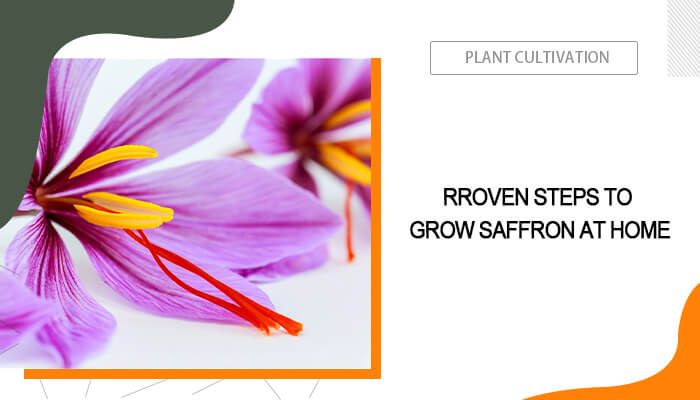


How can you tell the difference between saffron crocus and autumn crocuses? Is one poisonous?are the 3 red strands the harvest. Are they female or male parts. What are the shorter yellow parts ?
Hi Robin,
Thank you for your comment. We’re glad to answer your questions:
1. The saffron crocus (Crocus sativus) blooms in the fall, while autumn crocuses (Colchicum spp.) bloom in the autumn as well, but they are different plant species.
2. Yes, autumn crocuses are poisonous, containing toxic compounds like colchicine. The saffron crocus, on the other hand, is not poisonous.
3. Yes, the 3 red stigmas are the harvested part of the saffron crocus flower, which is the valuable spice saffron.
4. The 3 red stigmas are the female reproductive parts of the saffron crocus flower.
5. The shorter yellow parts are the stamens, which are the male reproductive organs of the saffron crocus flower.
In summary, saffron crocus and autumn crocuses can be differentiated by their bloom times, with saffron being the non-poisonous plant whose red stigmas are the harvested spice, while autumn crocuses are toxic.